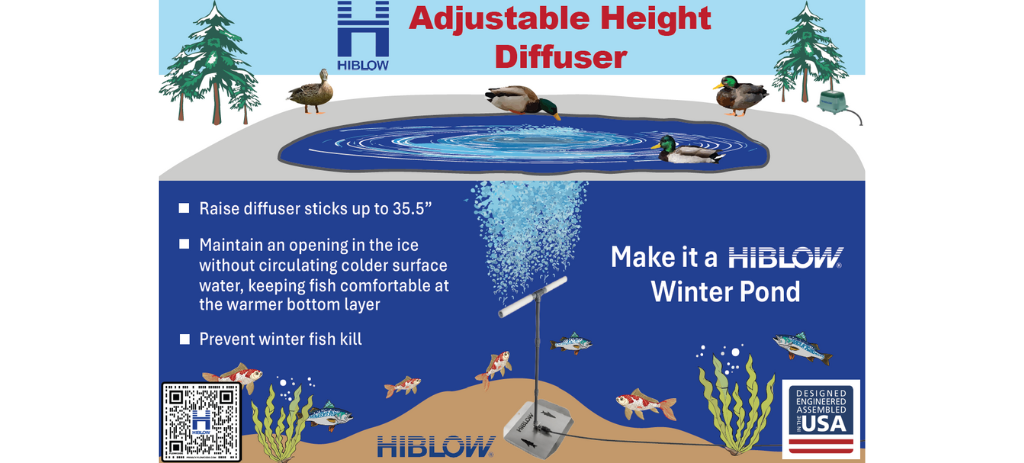Calculating or measuring the backpressure is important when planning and maintaining an aeration system.
Backpressure and air flow have an inverse relationship – the higher the pressure, the less the air flow. In reverse, the lower the pressure, the higher the air flow. The amount of airflow entering the pond is important to understand when choosing a pump, diffuser, and tubing. To estimate the amount of air flow we need to first calculate the total system pressure.
Calculating System Backpressure:
- Calculate water depth backpressure: Every 2.31 ft. of water depth is = 1 PSI. Example: the water pressure for an 8’ deep pond is: 8’/2.31 = 3.46 PSI
- Identify diffuser backpressure: A popular suggestion on the internet is a fine bubble stone diffuser, which can add as much as 1.5 PSI to the system and can easily plug. HIBLOW recommends a medium bubble diffuser which typically puts less than 0.25 PSI on the system. Regardless of which diffuser size/ type you choose, it is important to be able to estimate the amount of pressure the diffuser adds to your system. Also note the amount of air flow recommended for the diffuser. If below the minimum flow recommended, the air may not be strong enough to open the pores and “self-clean”. This information will be important at the end of this exercise. For more in-depth information on diffusers, check out our article: https://www.hiblow-usa.com/2021/05/03/pond-aeration-system-diffuser-options/
- Calculate friction loss: Air flowing through the tubing will create friction loss (added pressure). The air pump size, length of the tubing, number of lines, elbows, and diameter of the tubing will all factor into the calculation.
First, we need to figure out the diameter of tubing that is best for your set-up. As a rule of thumb, for any run within 50’ a 3/8” tube is likely ok. From 50’-100’ we typically suggest ½” diameter tubing. Anything beyond 100’ we suggest ¾’ diameter tubing. However, that is just a rule of thumb and there are exceptions based on the amount of air flow from the pump (pump size) and the back pressure.
Learn the steps for calculating friction loss on our website!









No comments:
Post a Comment